Kuchipudi Dance Tutorials with Breakdown of Mudras
Kuchipudi, a classical dance form that originated in Andhra Pradesh, is known for its graceful movements, rhythmic footwork, and rich storytelling. One of the essential elements that make Kuchipudi unique is its use of mudras—hand gestures that communicate deep emotions, stories, and complex ideas. In this blog, we’ll explore the fundamental mudras in Kuchipudi dance, how they contribute to the expressive nature of the performance, and how you can master them with Kuchipudi dance tutorials.
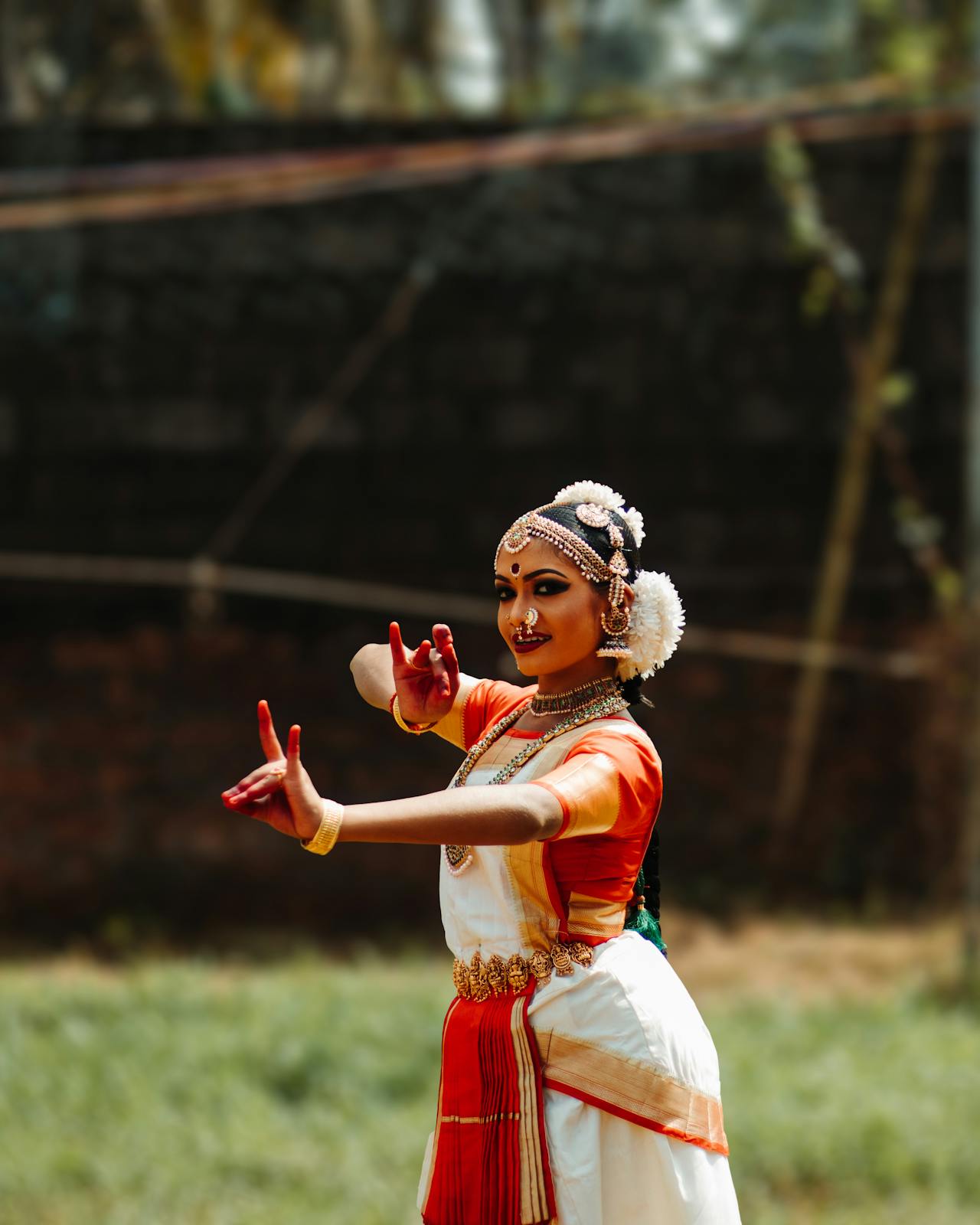
Why Mudras Are Essential in Kuchipudi
Mudras in Kuchipudi are not just hand gestures but a language in themselves. They serve to convey emotions, narrate stories, and establish a connection with the audience. The beauty of Kuchipudi dance lies in how these mudras, when combined with facial expressions, body movements, and rhythmic footwork, create a captivating performance that transcends mere steps.
In Kuchipudi dance tutorials, understanding the breakdown of mudras is crucial. Each hand gesture has its own meaning, and mastering them allows dancers to communicate the soul of the performance, whether it's devotion, love, anger, or sorrow. This detailed understanding of mudras is an integral part of Kuchipudi dance lessons that every dancer must undergo to achieve expertise.
Join Nayku’s online dance community, where skilled instructors break down every Kuchipudi gesture to help you perform with grace and emotion.
The Role of Mudras in Kuchipudi
Mudras form the foundation of abhinaya—the expressive part of Kuchipudi dance. The complexity of a dance is often determined by how effectively the mudras are used. Here are some reasons why they are so significant:
- Narrative storytelling: Mudras help the dancer narrate a story, connecting with the audience on an emotional level.
- Expressive communication: Mudras convey specific emotions or ideas, enriching the performance beyond just movement.
- Symbolic meaning: Every mudra has a symbolic meaning that adds layers of depth to the dance form.
- Cultural heritage: Mudras preserve ancient traditions, linking Kuchipudi to its cultural roots.
By incorporating these hand gestures into their performances, dancers can transform their movement into a language of its own—one that speaks directly to the audience.
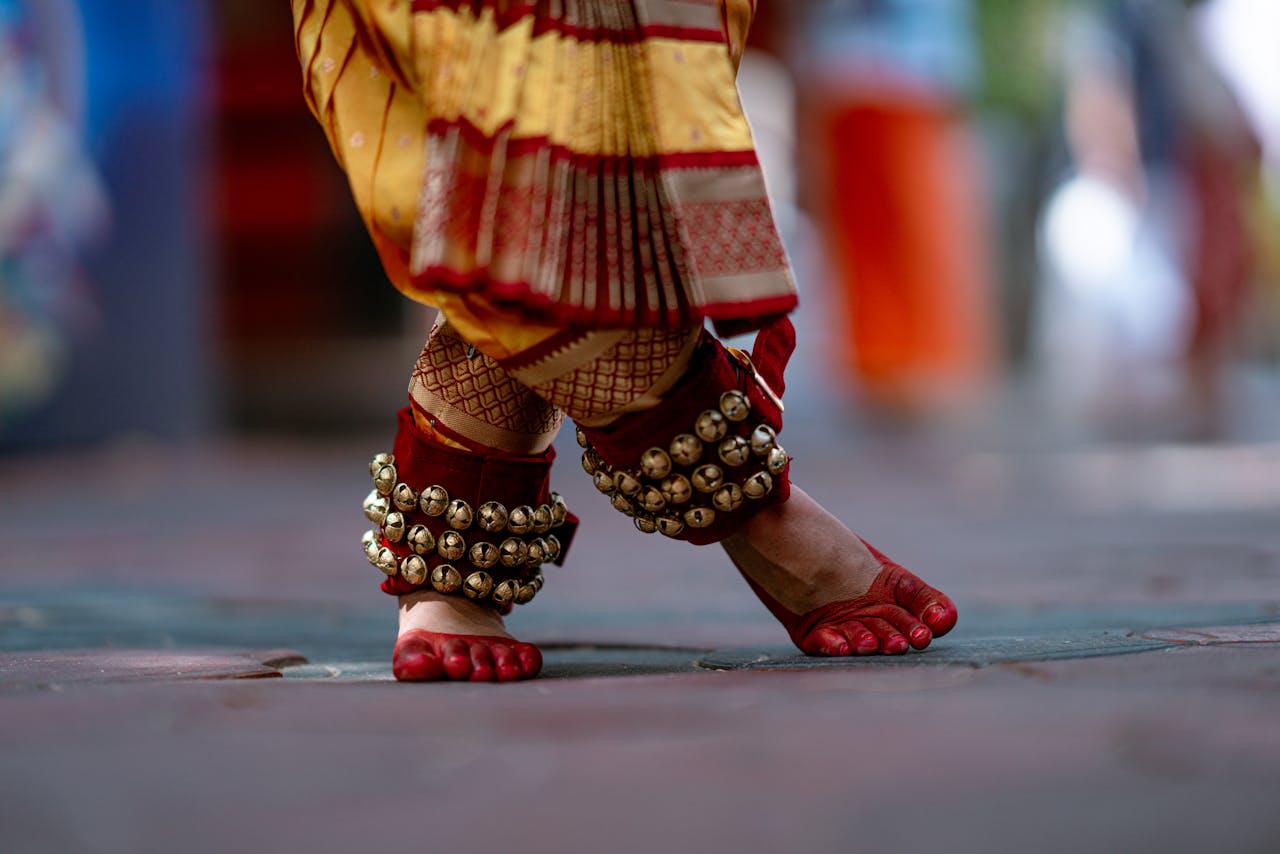
Basic Mudras in Kuchipudi Dance
Let’s explore some of the fundamental mudras in Kuchipudi that every dancer must learn:
1. Pataka
The Pataka mudra is a basic gesture where the fingers are held together, and the palm faces outward. This gesture represents a variety of meanings including the depiction of “a flag,” “clouds,” and sometimes “a river.” It is one of the first mudras taught to beginners and has a profound significance in Kuchipudi dance tutorials.
2. Tripataka
In Tripataka, the hand is bent at the wrist, with the thumb and little finger pointing outward, and the three middle fingers are straight. This mudra is widely used to symbolize “a crown,” “mountain,” or “a flower.” Its fluid movements help convey power and beauty in performance.
3. Ardhapataka
The Ardhapataka mudra involves bending the middle finger and placing it against the thumb, while the rest of the fingers are extended. This mudra symbolizes “a flag” or “a piece of cloth” and is often used in Kuchipudi dance lessons to show objects or represent elements of nature.
4. Kartarimukha
Kartarimukha is a hand gesture where the thumb and index finger are extended, while the middle, ring, and little fingers are bent. This mudra resembles a scissor, symbolizing “cutting” or “separating” and is used in performances to depict situations involving separation or conflict.
5. Simhamukha
In Simhamukha, the fingers are positioned in a way that they resemble the mouth of a lion. This mudra represents “lion’s face” and is often used to convey strength, ferocity, or courage in Kuchipudi dance tutorials.
With Nayku’s tailored Kuchipudi courses, you’ll learn the essential mudras and their meanings, bringing deeper expression to every performance.
Mudras in Storytelling
In Kuchipudi dance, the mudras often serve as an integral part of storytelling. The dancer, using various hand gestures, acts out stories from mythology, folklore, and religious epics, connecting the audience with the rich cultural history of India. Abhinaya (expression) and mudras work together to bring the story to life.
For instance, a performance might begin with Pataka, symbolizing the beginning of a story. As the dancer moves forward, other mudras like Tripataka and Kartarimukha are used to express conflict and drama, while Simhamukha could be used to represent a fierce lion.
This breakdown of mudras helps the dancer engage with the audience, pulling them into the emotional landscape of the story. Kuchipudi tutorials often focus on this combination of expressive movements and hand gestures, ensuring that each gesture flows naturally within the context of the narrative.
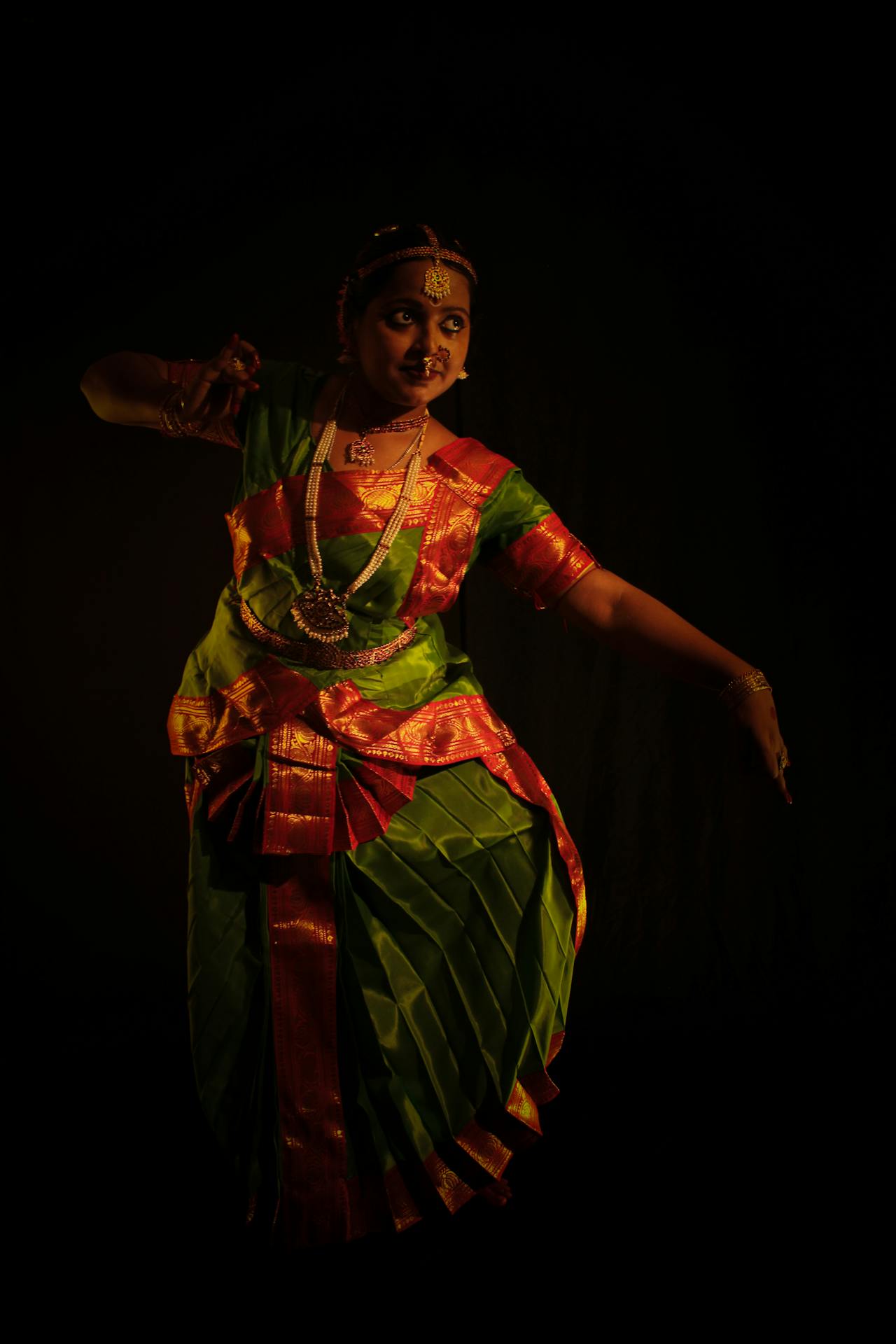
Advanced Mudras and Their Applications
As you progress through Kuchipudi dance lessons, you’ll encounter more advanced mudras that have specific meanings and can express more intricate emotions. Some of these include:
1. Anjali Mudra
The Anjali mudra is a gesture of respect, performed by bringing the palms together in front of the chest. This gesture is commonly used to convey “prayer,” “homage,” or “respect” and is often seen at the beginning or end of a performance.
2. Alapadma
Alapadma is a beautiful mudra where the fingers are spread apart, resembling a blooming flower. It signifies “lotus” or “the beauty of nature,” and is often used in performances to express grace, serenity, and beauty.
3. Kachchhapa
The Kachchhapa mudra resembles the shape of a turtle and represents the animal itself. It is often used to depict the slow and steady nature of certain characters or animals in Kuchipudi dance tutorials.
4. Pushpaputa
Pushpaputa is a mudra in which the hands are held as if offering a bouquet of flowers. This gesture is used to symbolize “flowers” or “offering” and is used in devotional dances or when depicting acts of gratitude.
At Nayku, we guide you step by step through the intricacies of Kuchipudi, ensuring you master each mudra for an authentic dance experience.
Learning Mudras in Kuchipudi Dance Online
One of the best ways to learn and master these mudras is through online Kuchipudi tutorials. Platforms like Nayku offer a range of tutorials that break down each mudra, explaining its significance, demonstrating its execution, and helping students practice them until they become second nature.
The advantage of online Kuchipudi dance lessons is that they offer flexibility—learn at your own pace, revisit complex steps, and receive detailed feedback. The breakdown of mudras in these tutorials provides learners with a deeper understanding of their meaning, enabling them to use the gestures effectively in performances.
Tips for Mastering Kuchipudi Mudras
To truly master the art of Kuchipudi mudras, consider the following tips:
- Consistency: Practice mudras regularly to ensure that the movements become fluid and natural.
- Use a mirror: Check your hand positioning and ensure that each gesture looks accurate and expressive.
- Study the meanings: Understanding the significance behind each mudra adds emotional depth to your performance.
- Incorporate facial expressions: Mudras work hand-in-hand with facial expressions in Kuchipudi. A smile or a frown can enhance the meaning of the gesture.
- Take feedback: Whether through online classes or live sessions, always seek feedback to refine your movements.
Nayku’s online Kuchipudi courses are designed to give you a thorough understanding of mudras, helping you tell stories through every gesture.
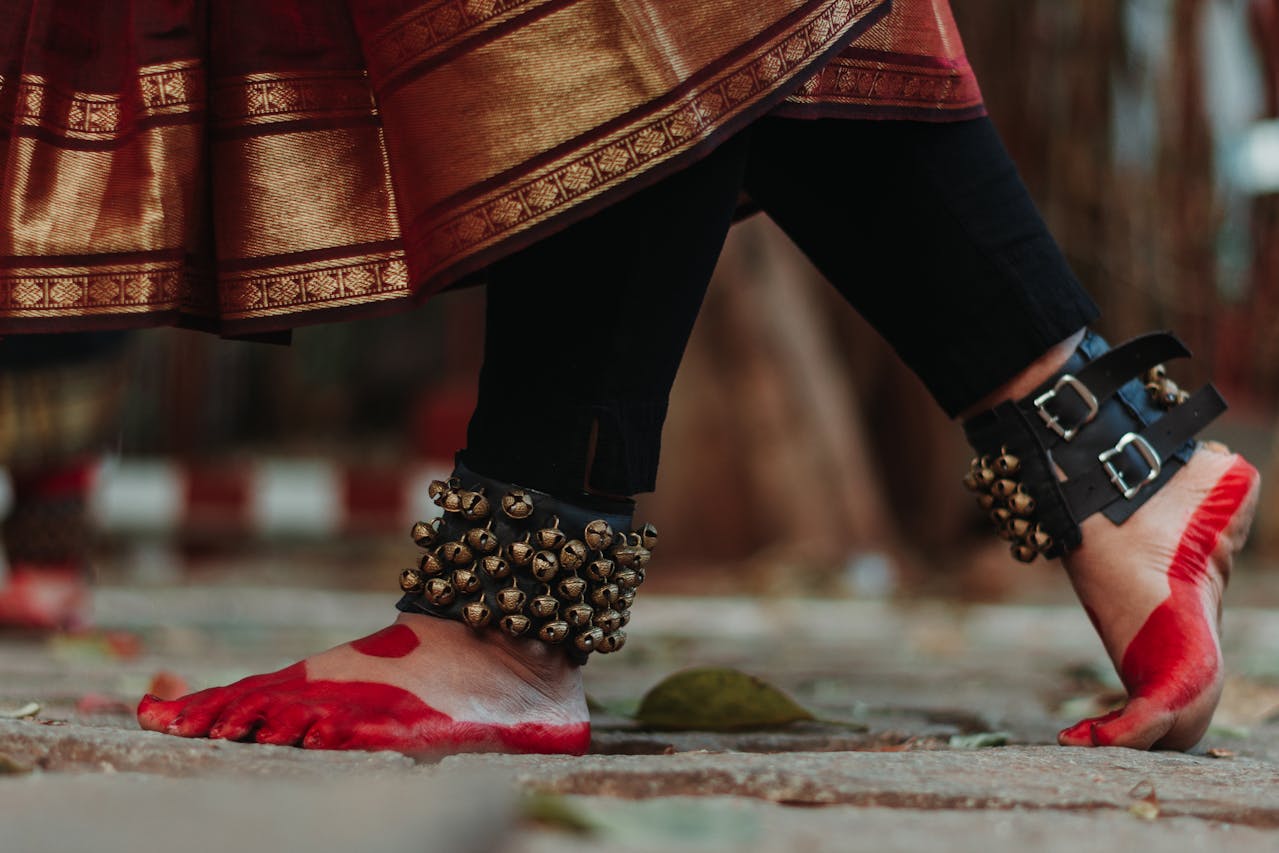
Conclusion: A Dance of Precision and Expression
Kuchipudi is a dance of rhythm, emotion, and expression, where every mudra plays a pivotal role. Mastering these gestures not only enhances your skill but also deepens your connection to the art form. With Kuchipudi dance tutorials available online, dancers of all levels can now learn the breakdown of mudras and understand their cultural significance from anywhere in the world.
Start your journey with Nayku today and discover how every mudra tells a story. Whether you’re a beginner or an advanced dancer, our detailed tutorials will guide you through the intricate world of Kuchipudi, step by step.
Related Articles
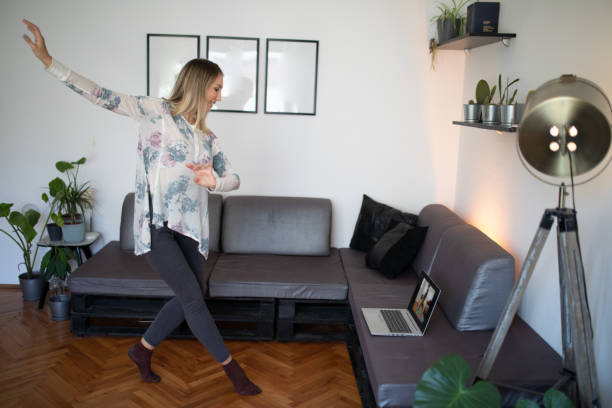
Dance Learning App For Free Download with Experienced Teachers
Nayku is your go-to dance learning app for free download. Connect with experienced teachers and enjo...
Read More
Best Dance Learning App For Beginners in 2026
Nayku is the best dance learning app for beginners in 2026, offering live online dance classes with...
Read More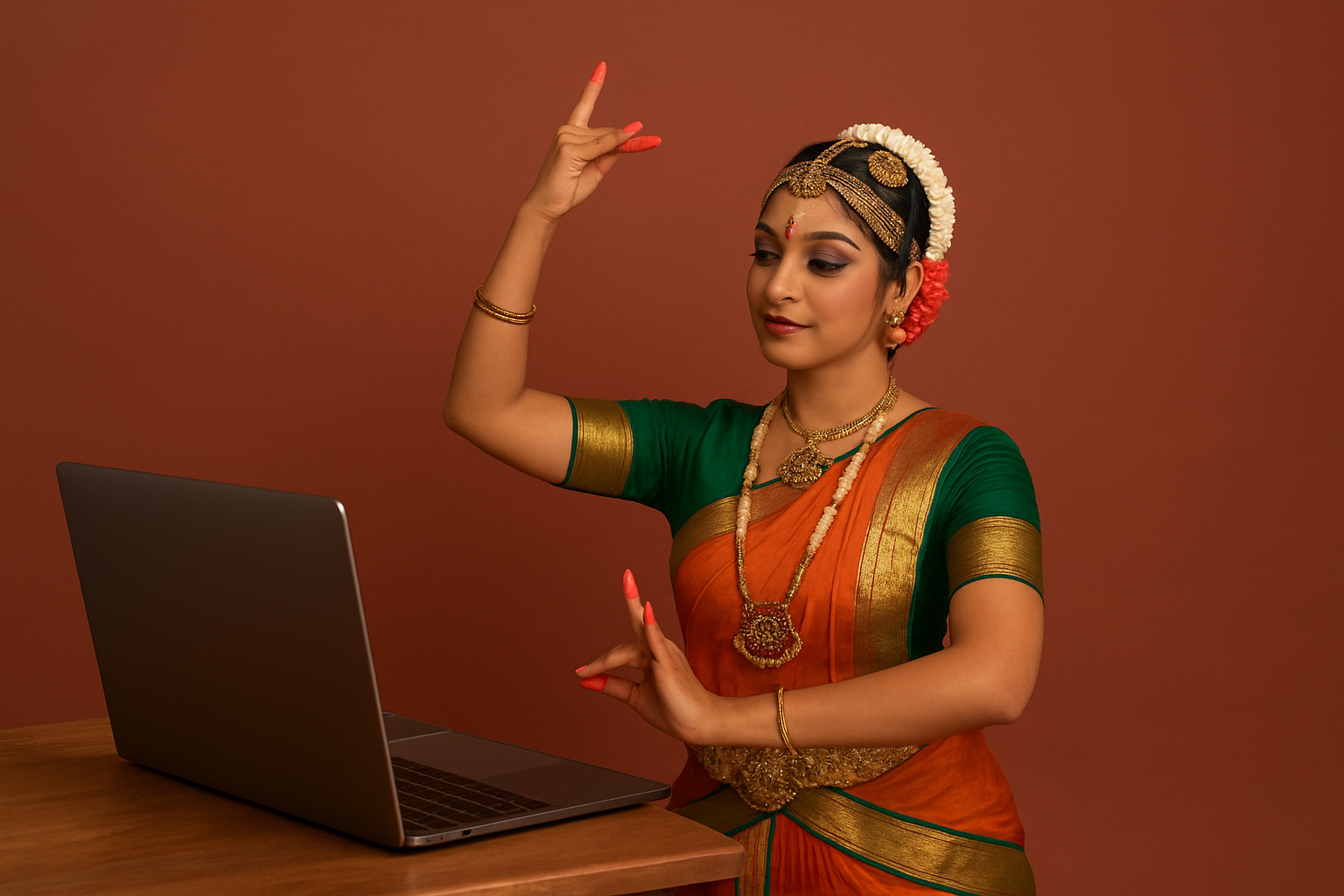
Best Bharatanatyam Dance Classes Online in Marysville California
Discover the best online Bharatanatyam classes in Marysville with Nayku. Join expert gurus, learn ex...
Read More
